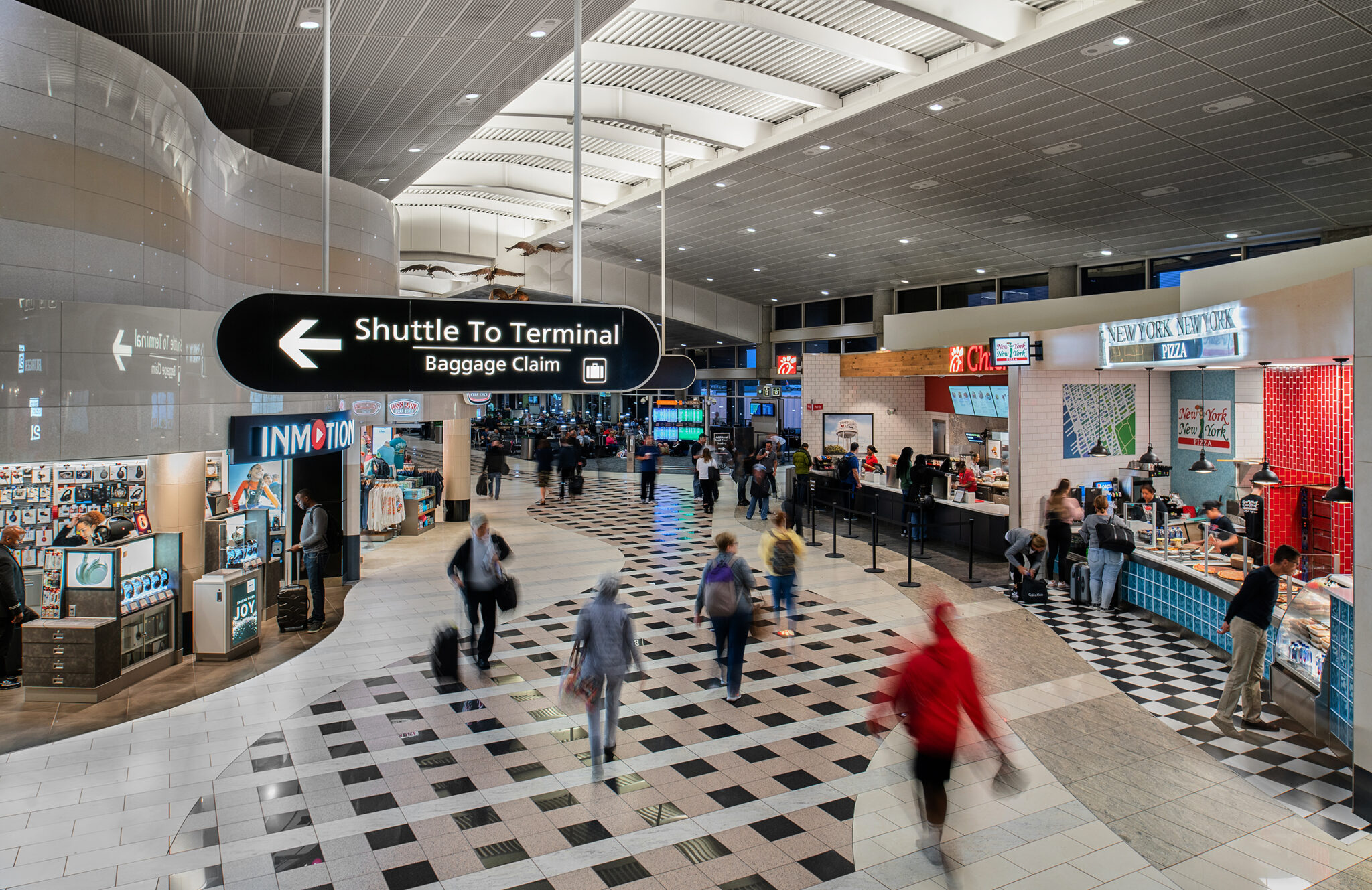The State of Airline Flight Tracking 6 Months After the Vanishing of MH370
Skift Take
Six months after the disappearance of MH370, all we know about what happened to the aircraft is what we don't know.
We don't know how or why communications to the aircraft were cut off. We aren't certain what direction the aircraft took after it lost communications. We don't undestand how we could lose an aircraft in 2014. We're unsure how to keep that from happening again.
In that time, the business of developing an aircraft tracking system has grown. The infrastructure for a number of solutions is being put in place.
Driving this growth is the decision by the industry push, led by the International Air Transport Association (IATA), which represents 240 of the world's airlines, to set up a dedicated Aircraft Tracking Task Force (ATTF) which will identify the best aircraft tracking options for airlines, in collaboration with the International Civil Aviation Organization (ICAO). The objective of the ATTF is to identify solutions which are viable and affordable to airlines, wherever possible using existing technologies and equipment, and make recommendations.
Inmarsat's Free Offer and Other Options
Inmarsat captured public attention by doing the complex reconstruction of satellite pings it from MH370, determining a likely flight path, the company acted on this success by offering to give free satellite tracking to airlines. However, though ICAO acknowledged the offer of free service, it clarified that the ultimate decision of recommendations would depend on the results of the ATTF review.
The company's free tracking would be offered to airlines which use Inmarsat services for their satellite communications and connectivity needs. In addition to revenue for those connectivity services, Inmarsat could have data revenue, at rates still to be determined, depending on what data usage standards the ATTF recommends —including a possible triggered data transmission from the Flight Data Recorder (black box) in case of emergencies.
Inmarsat reported Aviation Revenues of $46 million for the first six months of 2014, an increase of 35.7% over the same period last year. The company stated in its Interim Results 2014 report: "The increase is primarily due to increased SwiftBroadband and Classic Aero revenues as a result of growth in both the business jet and commercial air transport business." Inmarsat also stated: "In the aviation sector, we have seen growth in SwiftBroadband active terminals of 34%, period-over-period."
SITA's Solution
Those who already play a part in the aircraft operations infrastructure, also want to provide solutions which could make it to the top of the list. This includes SITA, which introduced a Flight Tracking System dubbed the AIRCOM Server Flight Tracker Solution this June.
This system capitalizes on SITA's existing dispatcher center system and the airline operations center system (AIRCOM) Server, using the Future Air Navigation System (FANS) ground application. The FANS system is already installed on a number of aircraft, and SITA argues, this gives it the advantage of not requiring a great up-front investment to install and activate.
Inmarsat's SwiftBroadband (SB) Safety System
Inmarsat announced this August that its Aircraft Communications Addressing and Reporting System (ACARS)-capable SwiftBroadband (SB) Safety system, was successfully installed on the Airbus A319 for ongoing trials. The company states that 10,000 aircraft currently in service use the Inmarsat Classic Aero services, and that the SB Safety System extends capability of ACARS/FANS data transmission when an aircraft is out of reach of land-based communications.
Additionally, the Inmarsat SB Safety system provides flight deck voice services and IP connectivity to the flight deck, which brings live inflight update capability to Electronic Flight Bags and allows for Flight Data Recorder downloads when needed. This solution will support aircraft positioning recording and tracking, and voice transmission for Air Traffic Management communications.
"A key point is that SB Safety provides a prioritized IP data pipe for the cockpit, for both security and continuity of service," said Leo Mondale, Inmarsat's President of Aviation. "This is particularly important for airlines that use SwiftBroadband for both safety services and cabin connectivity."
While Inmarsat and SITA have not formally announced an alignment of services into a single solution for airlines, this development from Inmarsat sets up an infrastructure for such a collaboration. For this A319 SB Safety system trial, Inmarsat stated that SITA was the communications service provider and that the system has already undergone SITA's Verification and Qualification (VAQ) testing procedure.
The FLYHTStream Solution
This combination of voice and tracking capabilities brings the Inmarsat SwiftBroadband SB Safety systems closer to the comprehensive FLYHTStream tracking system, which requires the installation of FLYHT's blue box at $100,000 a piece. The advantage of the FLYHTStream system is that it is self-contained and already up and running. Linked up to Iridium's Global Communications System, it provides effective coverage in remote areas where no ground communications are possible.
Regardless, airlines are not rushing to equip their aircraft with FLYHTStream systems. While that is a marginal investment, compared to other equipment an airline might install onboard, most carriers are waiting for the ATTF recommendation before committing to a final tracking solution.
The Influence of Connectivity Growth
Few aircraft are equipped with satellite services or the necessary radome antennae to operate a solution along the lines of what Inmarsat offers. Dave Davis, COO & CFO of Global Eagle Entertainment has previously told Skift that the current market penetration for satellite communications solutions in aviation, internationally, is about 4%. For any solution selected, the growth projections are thus considerable.
Airlines might delay adding satellite communications for in-flight connectivity for commercial reasons, but a flight tracking requirement ultimately imposed by ICAO would change that. If it came to be a requirement, and not be left as a recommendation.
The Radome
One hurdle for any tracking solution to overcome is getting the antennae on the aircraft during factory production (line-fitting). This requires separate certification, adding costs and causing aircraft delivery delays. While the various suppliers are in the process of getting their equipment line-fitted, Boeing has opted to come up with its own in-flight connectivity and antennae solution, in partnership with General Dynamics Ordenance and Tactical Systems. The Boeing Tri-band radome will support Ku and K/Ka wideband communications for commercial and military satellites. It will be available to retrofit (install on aircraft which are already in service) or line-fit by the fourth quarter of 2015.
"The Boeing Tri-band exemplifies the kind of competitive advantage we aim to give our customers," said Rick Anderson, vice president, Sales, Boeing Commercial Airplanes. "Airlines are telling us that the Boeing Tri-band's affordability, flexibility, wide range of capability and compatibility with all current data services make it ideal for their Boeing fleets, which have to quickly and economically adopt new technology to better serve passengers."
Boeing has stated that it plans to line-fit this radome on Boeing 737s, 777s, and 787 Dreamliners. This line-fitted solution will put Boeing at an advantage to negotiate with potential satellite service suppliers.
Where We Stand on Flight Tracking
What we have is a developing industry, spurred on by the need for aircraft connectivity in all its applications, and supported by the quest to become the ATTF's preferred aircraft tracking solution. Aircraft tracking would be the point of entry onto the aircraft, and the associated services would yield revenue.
Though all of these moves forward are advantageous, we have far to go before we can know where any aircraft is at any time—this is what most think of when they think of aircraft tracking.
The next step in the process for the ATTF is an update to ICAO due this September with a report to the industry to follow before the end of the year. This will be a report on draft options for enhanced global aircraft tracking, but not final recommendations.
As IATA sated in an ATTF FAQ published this June:
"The industry is in agreement that we should never again have an aircraft go missing and to that end, a well rationalized set of performance based options will move the industry forward toward improved global flight tracking. ICAO will need to consider what needs to be done in order for States to ensure that flight tracking capabilities are implemented globally. IATA and ICAO will continue to work together to determine what actions will need to be taken by both governments and industry."
IATA also wrote:
"Cost is one of the many factors being considered as part of the criteria to assess options. Other factors include items such as data management, availability (such as whether the equipment is available on the market), performance parameters, etc. The ATTF will need to carefully consider all of these factors."




